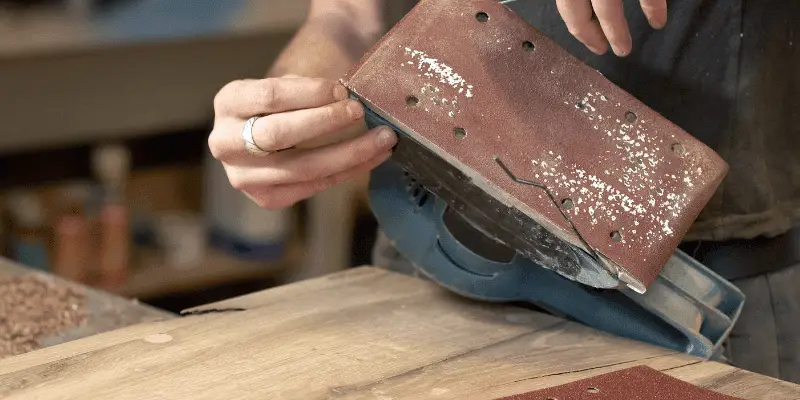When choosing between a drum sander and a planer, it’s important to consider their different functions. A drum sander is designed for finishing and smoothing wood surfaces, while a planer is used for thicknessing and flattening rough lumber.
Both tools can be essential in a woodshop, but they serve distinct purposes. Understanding the differences between a drum sander and a planer is crucial for selecting the right tool for your project. We’ll explore the unique capabilities of each machine, as well as their advantages and limitations.
Whether you’re a woodworking hobbyist or a professional, having a clear understanding of when to use a drum sander versus a planer will help you achieve the best results in your woodworking projects.
Drum Sander Vs Planer: A Comparison
When it comes to woodworking, choosing the right tools is crucial to achieving the desired results. Two essential devices often used in woodworking are the drum sander and planer. Let’s compare their operating principles and applications in woodworking to help you understand the differences between them.
Operating Principle Of Drum Sander
A drum sander operates by using a rotating drum covered with sandpaper to sand down wood surfaces. The motor powers the drum’s rotation, allowing the sandpaper to smooth and refine the wood. The thickness of the wood can be adjusted to achieve the desired finish.
Operating Principle Of Planer
A planer, also known as a thickness planer, functions by using a rotating cutterhead with sharp blades to shave and level the surface of the wood, resulting in consistent thickness throughout. The depth of the cut can be adjusted to achieve the desired thickness.
Application In Woodworking
Drum sanders are commonly used to achieve a smooth and fine finish on wood surfaces. They are ideal for removing scratches, blemishes, and unevenness on hardwood floors, tabletops, and cabinets. Additionally, they are effective in preparing wood for finishing, such as staining or painting.
On the other hand, planers are mainly utilized for creating parallel and consistent thickness in wooden boards. They are suitable for preparing rough lumber, eliminating bows and twists, and producing precise thickness for furniture construction and cabinetry.

Drum Sander Advantages
When it comes to achieving a smooth, polished finish on woodwork, drum sanders are a popular choice among professional woodworkers and hobbyists alike. They offer several advantages over planers, making them a valuable addition to any workshop.
Smooth Finishing
Drum sanders excel in producing a flawlessly smooth surface on wood, making them an indispensable tool for creating fine furniture, cabinetry, and other woodworking projects that require a refined finish. The abrasive drum rotates at high speeds, eliminating imperfections and leaving behind a velvety smooth surface. This makes them particularly useful for sanding intricate designs or curved surfaces that may be challenging to smooth using a planer or other methods.
Versatility In Sanding Operations
Aside from their finesse in achieving a smooth finish, drum sanders offer superior versatility in sanding operations compared to planers. They can handle a wide range of materials, including hardwood, softwood, composite boards, and even metals and plastics, allowing for diverse sanding applications.
Drum sanders also provide the flexibility to adjust the sanding depth, enabling users to control the amount of material removed with precision. This feature proves beneficial for delicate projects where a lighter touch is required, as well as in situations where fast stock removal is necessary.
Planer Advantages
When it comes to woodworking, a planer offers several advantages that make it an essential tool in any workshop. Whether you’re a seasoned professional or a hobbyist, a planer can help you achieve precise and smooth finishes on your projects. Let’s delve into the key advantages of using a planer for your woodworking needs.
Surface Flattening
A planer excels at leveling and flattening rough or uneven surfaces on wood. By running rough lumber through a planer, you can achieve a uniform and smooth surface, making it easier to work with and resulting in a more professional-looking final product. This capability is invaluable for creating tabletops, doors, and other large surfaces where a uniform finish is essential.
Reducing Thickness
One of the standout features of a planer is its ability to precisely reduce the thickness of wood. This is particularly useful when you need to create uniform thickness across multiple panels or boards for a project. Whether you’re aiming to match the thickness of different wood pieces or achieve the desired dimensions for your project, a planer ensures consistent and accurate results.
Factors For Consideration
When choosing between a drum sander and a planer, several factors come into play that can significantly impact your decision. Taking these factors into consideration will help you determine which tool best suits your needs and preferences.
Durability And Maintenance
Durability and maintenance are crucial factors when considering a drum sander or planer. A drum sander typically requires more maintenance due to its intricate internal mechanisms, such as the conveyor belt and sanding drum. Regular cleaning and adjustments are necessary to ensure optimal performance. On the other hand, planers generally require less maintenance, as they have simpler designs with fewer moving parts. In terms of durability, both tools are built to withstand heavy use, but a drum sander may have a slightly longer lifespan with proper care and maintenance.
Cost And Space Requirements
When it comes to cost and space requirements, planers are usually more budget-friendly and compact than drum sanders. Planers are suitable for smaller workshops or limited workspace, making them a practical choice for hobbyists or DIY enthusiasts. Additionally, the initial cost of a planer is typically lower than that of a drum sander. However, drum sanders offer a more versatile sanding capability and are ideal for larger projects. Due to their larger size and higher price, drum sanders are better suited for professional woodworking shops or individuals with ample space and a larger budget.
Frequently Asked Questions For Drum Sander Vs Planer
What Is The Difference Between A Drum Sander And A Planer?
A drum sander is perfect for finishing flat surfaces, while a planer is ideal for creating uniform thickness on lumber. The drum sander is used for fine sanding, whereas the planer is used for initial surfacing and edge straightening. Both tools complement each other in woodworking projects.
How Does A Drum Sander Work?
A drum sander works by using a rotating sanding drum that smoothens and finishes the wood surface. The operator adjusts the height and feed rate to achieve the desired smoothness. The abrasive paper wrapped around the drum efficiently sands the wood, making it ideal for achieving a polished, professional finish.
What Are The Advantages Of Using A Planer?
A planer allows you to create uniformly thick boards with smooth surfaces, saving time and effort. It eliminates imperfections and warp, ensuring precise dimensions for your woodworking projects. With a planer, you can achieve consistent thickness and perfectly flat surfaces, enhancing the quality of your work.
When Should I Use A Drum Sander?
A drum sander is perfect for refining and smoothing surfaces after initial surfacing with a planer. It is used for finishing tasks, removing shallow imperfections and preparing the wood for staining or painting. The drum sander ensures a polished, professional finish, making it ideal for furniture and cabinetry projects.
Conclusion
Both drum sanders and planers have their distinct advantages in woodworking. Considering your project’s specific requirements will determine which machine is the best fit for you. While drum sanders excel in fine finishing, planers are efficient for thicknessing. Understanding the nuances of each tool can help you make an informed decision for your woodworking needs.


